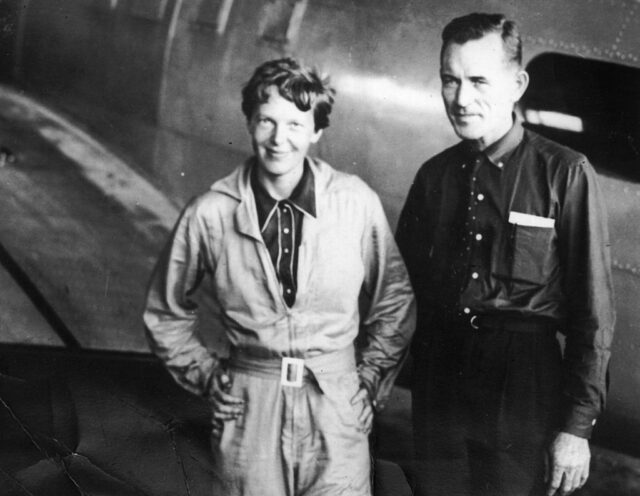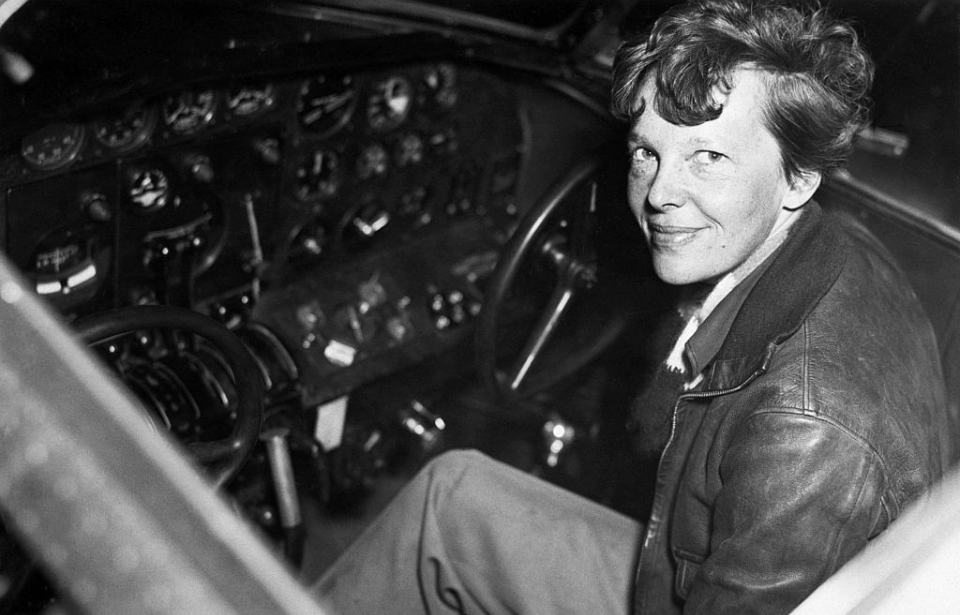Has Amelia Earhart’s long-lost Lockheed Model 10-E Electra been found at the bottom of the Pacific Ocean? That seems to be a very real possibility, with exploration company Deep Sea Vision posting scans that appear to show the dimensions of an aircraft on the seafloor.
Last seen leaving New Guinea

Amelia Earhart went missing while attempting to become the first female to complete a circumnavigation flight of the globe. It wouldn’t be the first accomplishment under the aviator’s belt, with her having previously been awarded the Distinguished Flying Cross (DFC) for becoming the first woman to complete a non-stop solo flight across the Atlantic.
Earhart and her navigator, Fred Noonan, were last seen on July 2, 1937, leaving Lae, New Guinea. Their next stop was supposed to be Howland Island, an uninhabited piece of land in the central Pacific. The plan was for the pair to refuel their Electra there, before continuing to California, where they’d complete their historic journey.
However, Earhart and Noonan never arrived, with their whereabouts becoming the center of a mystery that’s gripped much of the world for decades.
Theories abound

While the official US stance is that the Electra ran of out fuel and crashed into the Pacific, several theories state otherwise. Many believe Amelia Earhart and Fred Noonan landed on the barrier reef surrounding Gardner Island, officially known as Nikumaroro, where they were possibly eaten by large crabs.
Those who support this theory cite distress calls that originated from the region, located some 350 nautical miles from Howland Island, as well as signs of habitation noted by US Navy aircraft from the USS Colorado (BB-45) and British colonizers following the aircraft’s disappearance.
Among the evidence found were bones situated near what was once a campfire, plane parts and 1930s-era glass bottles.
In 1991, a piece of metal debris washed ashore on Gardner Island. While it was initially thought to have come from Earhart’s Electra, it was determined some 30 years later to have belonged to a World War II-era Douglas C-47 Skytrain.
A 2009 photograph may hold the key
EXCLUSIVE: Major breakthrough in the search for Amelia Earhart https://t.co/dKWPR0mgeU pic.twitter.com/CsFc1LzBp4
— Daily Mail Online (@MailOnline) September 2, 2023
The International Group for Historic Aircraft Recovery (TIGHAR) says a 2009 photograph possibly shows the underwater remains of an aircraft that may be Amelia Earhart’s Electra.
One of the most recent clues in the search for the missing aviator – and one that might prove the theory the aircraft wound up on or near Gardner Island – the image may show the Electra’s engine cowl buried beneath the ocean’s surface. It’s this lead that has prompted a renewed search of the area by TIGHAR.
The organization, which runs The Earhart Project, believes rising tides and surf swept the aircraft over the edge of the barrier reef, causing it to sink beneath the water’s surface off the west end of Gardner Island.
Speaking with the Daily Mail, Ric Gillespie, the executive director of TIGHAR, said, “The similarity to an engine cowling and prop shaft was not noticed until years later and the exact location was not noted at the time, which meant attempts to relocate the object were unsuccessful.”
The photo is currently undergoing forensic analysis. While the results won’t immediately reveal what happened to Earhart and Fred Noonan, they will help to either rule out or strengthen theories surrounding the pair’s unsolved disappearance.
Are these underwater scans of Earhart’s missing aircraft?
AMELIA EARHART’S PLANE FOUND? | An explorer and his team believe they have found the answer to one of the greatest mysteries in U.S. history.
Read more: https://t.co/PYLOcTR9Si pic.twitter.com/crvAr3AeQL
— WFLA NEWS (@WFLA) January 29, 2024
According to Deep Sea Vision, the underwater scans were captured in mid-to-late 2023, during a 16-man search for the missing Electra. Approximately 30 days into the mission, they captured what they believe are sonar images of the aircraft on the seafloor, approximately 100 miles from Howland Island and 16,000 feet below water.
To locate the wreckage, the crew used the Kongsberg Discovery HUGIN 6000, “the most advanced underwater drone.” Over 5,200 square miles were surveyed before the device came across the object the team believes to be Earhart’s missing Electra.
The discovery has yet to be confirmed, but that hasn’t stopped Tony Romeo, Deep Sea Vision CEO and former intelligence officer with the US Air Force, from speaking about it to the media. In an interview with Today, he said, “There’s no other known crashes in the area, and certainly not of that era or that kind of design with the tale that you see in the image.”
More from us: Archaeologists Discover 2,000-Year-Old Home That May Have Belonged to Pliny the Elder
The crew plans to return to the area at some point in the near future to learn more about the wreckage.
